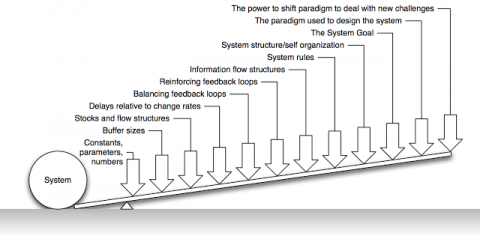How Networks Can Change Systems
October 2, 2014 Leave a commentAt this point a couple of networks with which I am working have reached or are reaching the three year mark in their formalized existence. By many accounts, this is a milestone and inflection point worth noting, as these initiatives have built significant connectivity (depth and breadth) and alignment (shared sense of common identity and direction) among key and diverse actors. Furthermore, there has been a real proven capacity of these networks to meet individual self/ organizational interests in terms of learning, new partnerships, and a broader community/marketplace of support. And there is a growing appetite for and interest in how this all adds up to significant system change. Another way of framing this is people are wondering how they can activate the next level of the system to bring all of their interactions to a place where there is greater abundance, opportunity, and impact.
Three related thoughts about how these networks might achieve systemic change:
- Change who and what matters. As June Holley has said, “Systems change when new networks take the place of the old.” This is not about rearranging the deck chairs, but significantly changing how value is defined, who does that defining, how that value is exchanged, and between whom. Think of local currencies, brought together by localized and more densely connected networks, that ascribe value to skills and belongings that may get overlooked by the standard market economy. Or think about Craigslist, eBay, Freecyle, and how, through new channels of discovery and exchange, items and ideas we might otherwise throw away have found new value. These systems and tools are working because they offer more than one scale and source to assess value.
- Build and re-channel power and wealth. Power is held in place in part by existing patterns of connection and resource flows. And power is not finite. Abundance and alternatives do not necessarily dry up, but get held up, held back, held by and/or flow between and to some and not others. Shifting and reclaiming flows through network activity can create new power arrangements and priorities. For example, micro-finance has created a parallel banking system that has displaced much of the traditional banking and lending structures in the developing world. These innovations are built on the logic of creating and accessing new connections and encouraging exchange, local and trans-local.
- Embrace a diversity of systemic actors and levels of intervention. System change is less about finding the silver bullet, per se, and more about finding the silver buckshot. This will come in part from embracing a diversity of perspectives that yield orthogonal thinking and greater systemic intelligence. It is some combination of ensuing efforts addressing the system at different levels that will likely yield success, including those focused on deeper leverage points as laid out by Donella Meadows – shifting paradigms and mindsets, creating new narratives; developing and aligning around different goals for the system; and supporting self-organization.


